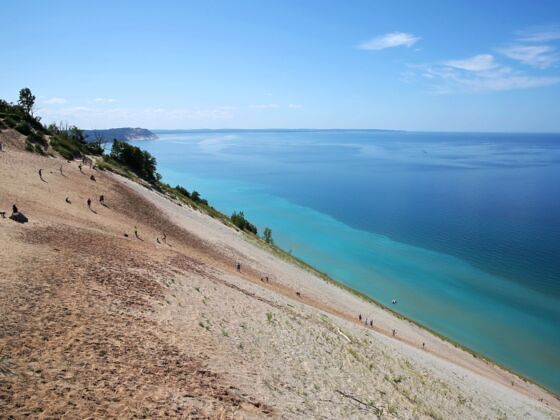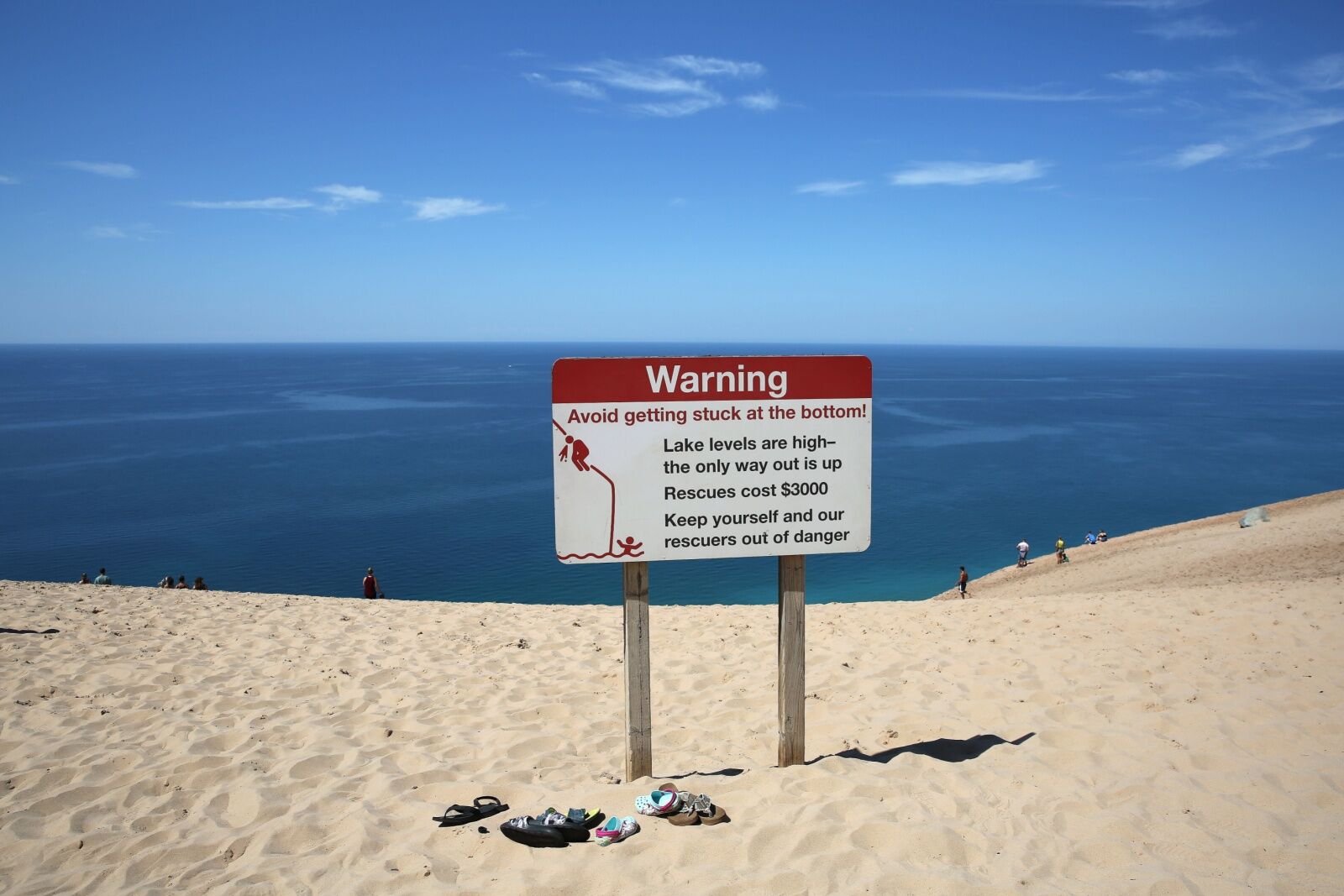When most people visit one of America’s 63 national parks, or one of the other 366 sites managed by the National Park Service, they probably don’t think much about what happens if something goes wrong. Since all the park service sites are federally managed, if something goes wrong, you can just call for help, and someone will quickly come and rescue you. Right?


This US National Seashore Can Charge $3,000 if You Need an Emergency Rescue
Well, that is right, mostly. But what would surprise people is if help came to get you, and while they were helping you, they handed you a bill for $3,000 to fund your rescue. But that’s exactly what may happen at Sleeping Bear Dunes National Seashore near Traverse City, Michigan, which covers 35 miles of shoreline along Lake Michigan.
The park’s centerpiece is the Sleeping Bear Dune Climb, a massive dune that rises over 450 feet above the lake. Visitors can hike to the top of the park’s dunes for breathtaking views of Lake Michigan and surrounding landscape. And as well-known travel host Samantha Brown shared on TikTok, you can also hike down the dune to the lake level — but if you can’t make it back up on your own, you could pay up to $3,000 for your rescue.
@samanthabrowntravels Would you try this? #sleepingbeardunes #lakemichigan #michigan #traversecity @Traverse City ♬ original sound – Samantha Brown
That may seem unfair, but the national seashore makes it very, very obvious that the route down to the waterline is steep. According to the TiKTok video, the steep route down to the shoreline has a 33 percent downhill grade. That makes the trek back up particularly difficult, especially as the terrain is all sand, with absolutely no shade. All this is posted on signs atop the dunes.

Warning signs at Sleeping Bear Dunes. Photo: Bo Shen/Shutterstock
The National Park Services uses multiple methods to rescue hikers who can’t make it back up. Sometimes, they just send someone down on foot with food and water. If the water level is low and beach is wide enough, they can drive a vehicle down to the shoreline to rescue the hikers. But some retrievals are more complicated, requiring assistance from area firefighting organizations, complex pulley and rope systems, or even rescue via water, if getting someone out by boat is the only option. Park rangers have gone on the record saying that the park will not charge $3,000 for a Sleeping Bear Dunes rescue — but area organizations that may need to assist in the rescue certainly could.
According to park officials, there were 31 rescue calls in 2017 from the Lake Michigan Overlook and the Dune Climb in Sleeping Bear Dunes National Seashore — more calls even than Yellowstone National Park in the same year. In more recent years, the number of rescues has dropped dramatically, with just 11 calls between Memorial Day and Labor Day 2023. That’s likely due to both roving members of a preventative search and rescue team, as well as the large signs warning would-be hikers of the hefty potential fine.
Do National Park Service sites usually charge for rescues?

Photo: NPS/Ally O’Rullian/Public Domain
The Sleeping Bear Dunes rescue policy is in line with most other national park sites, which generally do not charge for emergency rescues. However, parks can levy fines for recklessness or unsafe behavior, if that’s what led to the rescue. It can also charge visitors if they intentionally engage in any behavior that causes damage within the park site. The National Park Service accounts for the costs of rescues in its annual operating budget, and many search and rescue team personnel operate on a volunteer basis.
However, other organizations not affiliated with the sites that may be required for rescue are allowed to charge for their services, as is the case with Sleeping Bear Dunes rescues. For that reason (and many others), it’s always best to avoid putting yourself in situations where you’re unsure of your abilities and may not be able to get back to a trailhead (or any other place of safety) on your own. Knowing a bit of backcountry safety information can go a long way.